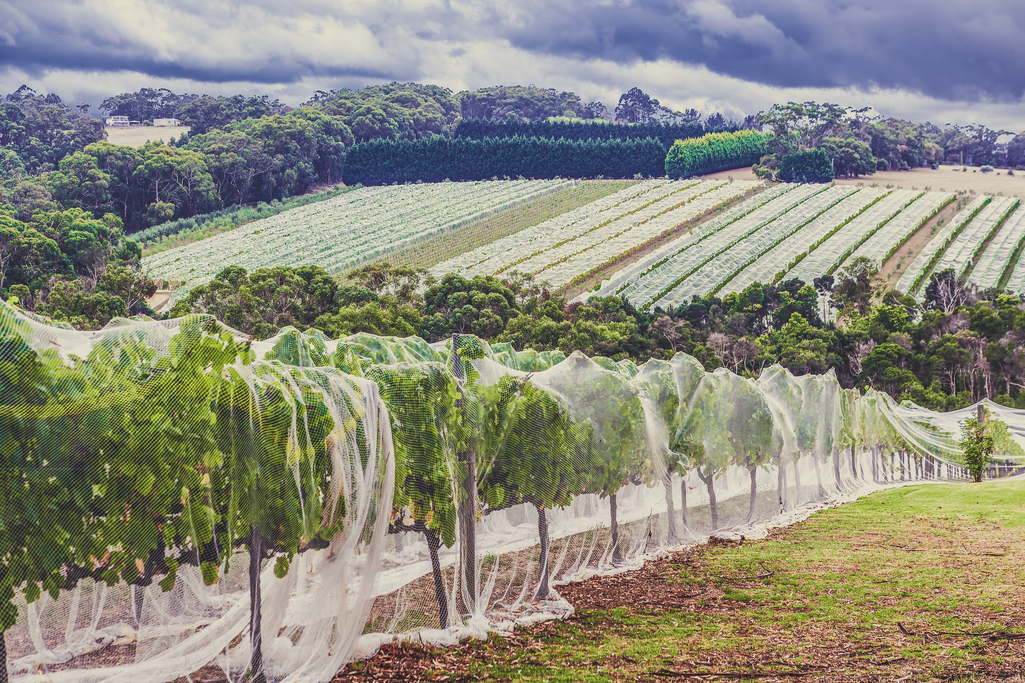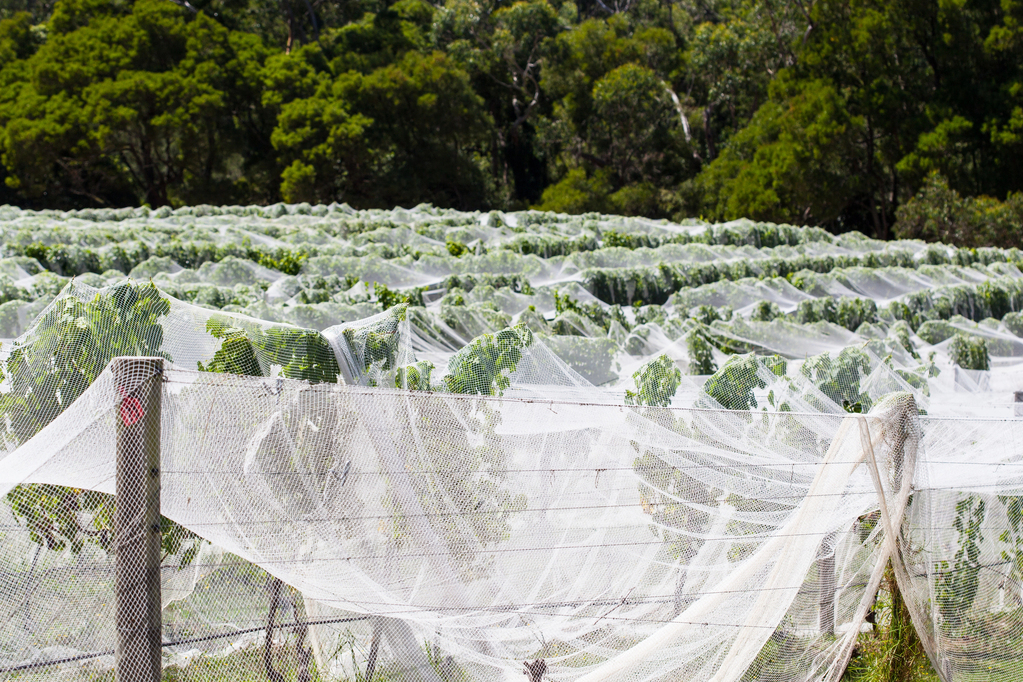Bird Netting in Australia: Protect Crops While Caring for Wildlife
Bird netting is a valuable tool for Australian farmers, offering an effective way to safeguard crops from hungry birds. However, improper use of netting can harm wildlife, making it essential to apply it correctly.
Let’s explore everything you need to know about bird netting—from its materials and types to legal requirements and usage tips.
What Exactly Is a Bird Netting?
Bird netting is a mesh-like material designed to create a barrier over crops, preventing birds from accessing them. Here are key details about its construction and variations:
Materials: Common options include polyethylene, polypropylene, and nylon, offering durability and UV resistance for outdoor use.
Dimensions: For ACT compliance, netting must have a mesh size of 5mm x 5mm or smaller when stretched. This helps prevent wildlife entanglement.
Colours: Available in black, white, and green. Black netting is UV stable and long-lasting, while white netting is more visible to birds, helping reduce accidental entanglement.
How Bird Netting Protects Crops
Birds can cause extensive damage by pecking at fruits, seeds, and vegetables. Netting forms a physical barrier that:
- Protects crops like grapes, berries, and tomatoes.
- Prevents seed loss during germination stages.
- Helps farmers reduce reliance on chemical pesticides or scare tactics.
- With proper installation, netting ensures crops remain intact and ready for harvest without compromising the safety of wildlife.
How to Use Bird Netting
To maximise the effectiveness of bird netting and minimise risks to animals, follow these steps:
- Select the right mesh size: Choose a size appropriate for the birds in your area (smaller mesh for smaller birds).
- Install support structures: Use stakes, frames, or trellises to keep the net off the plants, ensuring space between the crop and the netting.
- Secure all edges: Anchor the net tightly to the ground or wrap it around trees to prevent birds or animals from slipping underneath.
- Monitor regularly: Check the netting for damage or trapped wildlife. Adjust if needed to maintain coverage.
- Remove after harvest: Take down the net when crops are no longer vulnerable to avoid unintended entanglement.
Bird Netting Types
-
- Knitted netting: Lightweight and durable, ideal for larger areas.
- Extruded netting: Stiff and rigid, better suited for long-term crop protection.
- Canopy netting: Covers entire orchards or vineyards, protecting plants from both birds and extreme weather.
- Wildlife-friendly netting: Designed with larger mesh openings to reduce the risk of trapping small animals.
Pros and Cons of Bird Netting
| Pros | Cons |
|---|---|
| Protects crops without chemicals | Incorrect installation can harm birds and small animals |
| Reduces financial losses from bird damage | Requires regular maintenance to remain effective |
| Durable and reusable for multiple seasons | |
| Available in wildlife-friendly options to prevent entanglements |
How to Choose the Right Bird Netting for You
When selecting bird netting, consider:
- Crop type: Ensure the mesh size is appropriate for the fruit or vegetable you’re growing.
- Bird species: Identify the common bird pests in your area to select the most effective netting size.
- Coverage area: Choose canopy netting for large areas or lightweight netting for smaller gardens.
- Weather resistance: Look for UV-stabilised netting for durability under the Australian sun.
- Ease of use: Select reusable netting if you plan to use it seasonally.
Legality of Bird Netting Across Australian States
Compliance requirements for bird netting can differ from state to state. In Victoria, for example, fruit tree netting must have holes no smaller than 5mm to minimise wildlife entrapment.
In New South Wales, wildlife-friendly netting is mandated to ensure native animals like possums and birds are not harmed.
Before purchasing, it is essential to review the local regulations for your state to avoid fines and ensure eco-friendly practices.
Wildlife-Safe Netting Regulations
From 1 September 2021, new regulations were introduced in the Australian Capital Territory (ACT) mandating the use of wildlife-safe netting to protect household fruiting plants. Non-compliance with these laws can result in fines for both individuals and businesses.
Key Requirements of the ACT Regulations
Mesh size: Netting must have a mesh size of 5mm x 5mm or smaller at full stretch to prevent animals from getting trapped.
Easy check: If you can poke your finger through the mesh, it’s too large and could endanger wildlife.
Application scope: The regulation applies to household fruit trees, vegetable gardens, and other fruiting plants, including those grown for personal use in both urban and rural areas.
When and How to Use Netting Safely
When to Start Netting:
The best time to install bird netting is after your plants have finished flowering and the tiny fruits start to appear. This is when wildlife becomes particularly attracted to your garden.
Before fertilization, flowers won’t draw animals, so netting isn’t necessary at that stage.
Best Practices for Safe Netting Installation:Secure the Net: Ensure the netting is tightly secured around the trunk to prevent animals from slipping underneath.
- Use Larger Frames: Frames should be significantly larger than your plants to avoid birds pecking through the netting.
- Individual Coverings: Use fruit sleeves or bags on individual fruits or branches to minimize entanglement risks and make harvesting simpler.
- Responsible Disposal: Always dispose of old netting in biodegradable bags to prevent harm to wildlife. Avoid leaving discarded netting on the ground, as it can pose a danger to reptiles and other animals.
Helping Injured Wildlife
If wildlife becomes trapped in your netting:
Do not attempt to free the animal yourself—injured animals may react unpredictably.
Contact ACT Wildlife at 0432 300 033 (available 24/7) for professional assistance. They can safely rescue and care for the animal.
Choose Wildlife-Friendly Bird Netting Today
Whether you’re a small-scale gardener or a large orchard owner, bird netting offers a practical solution to crop protection. However, it’s crucial to pick wildlife-friendly netting and adhere to state guidelines to ensure your netting benefits both your crops and the environment.
Explore our Wildlife Friendly Bird Netting at Gardening Direct Australia and protect your crops responsibly.




